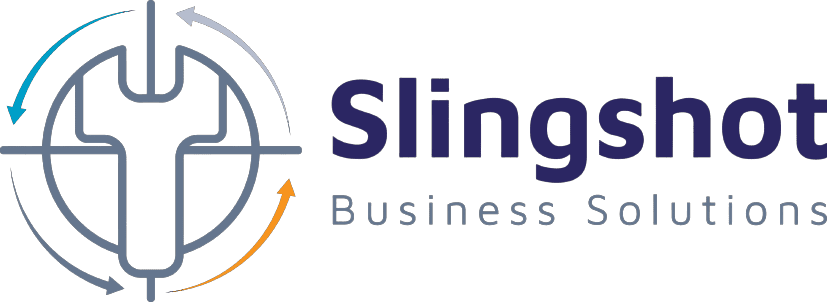Table of Contents
Introduction
In the competitive landscape of small businesses, effective sales strategies are the driving force behind revenue and sustainable growth. In this article, we explore proven sales techniques to propel your business forward, increase conversion rates, and boost your bottom line. Embrace a customer-centric approach, leverage technology, and foster a culture of continuous learning to take your small business to new heights.
Know Your Target Audience:
Understanding your target audience is the bedrock of any successful sales strategy. Thoroughly research and analyze your potential customers, diving deep into their demographics, preferences, behaviors, and pain points. By creating detailed buyer personas, you gain valuable insights into what drives their decision-making process and how your products or services can cater to their unique needs. Armed with this knowledge, you can tailor your sales messages, offerings, and customer interactions to resonate with their motivations, ultimately increasing the chances of converting leads into loyal customers.
Build Strong Relationships:
In the realm of sales, relationships are the lifeblood of success. Emphasize building genuine connections and trust with your customers from the initial point of contact to post-sale interactions. Provide impeccable customer service that goes beyond mere transactional exchanges, showing a sincere interest in your customers’ well-being and satisfaction. Timely follow-ups, personalized communications, and active listening demonstrate that you genuinely care about their needs. By cultivating long-lasting relationships, you not only secure repeat business but also foster brand loyalty and word-of-mouth referrals, which can be a powerful catalyst for growth.
Focus on Value Proposition:
In a competitive market, your value proposition becomes the driving force behind sales conversions. Clearly communicate the unique value your products or services offer to your target audience. Showcase how your offerings address specific pain points, fulfill desires, or streamline processes, providing tangible benefits and superior solutions. It’s vital to emphasize the positive impact your customers can experience by choosing your business over competitors. Crafting a compelling and convincing value proposition lays the foundation for engaging prospects and instigating them to take action.
Effective Lead Generation:
A well-executed lead generation strategy is essential for sustaining a steady stream of potential customers. Leverage various digital marketing channels and techniques to attract and capture leads effectively. Implement content marketing campaigns that deliver valuable and relevant information, positioning your business as a reliable industry authority. Social media platforms provide an opportunity to engage with your target audience and build brand awareness. Employ targeted advertising campaigns that reach potential customers based on their demographics, interests, and behaviors. Optimize your website and landing pages to convert visitors into leads through compelling calls-to-action and lead capture forms.
Nurture Leads with Email Marketing:
Once you have captured leads, a well-crafted email marketing campaign becomes a vital tool for nurturing prospects throughout their buying journey. Personalize your emails based on the data collected during the lead generation phase. Tailor your messages to address specific pain points and offer solutions that align with their needs. Utilize automation to deliver timely and relevant content, guiding leads through each stage of the sales funnel. By providing value through educational content, helpful tips, and exclusive offers, you establish your business as a trusted advisor, increasing the likelihood of converting leads into paying customers.
Implement a Sales Funnel:
A well-structured sales funnel is an essential element of an effective sales strategy. It consists of a series of stages that guide potential customers through their buying journey, from initial awareness to final conversion. Each stage of the funnel serves a specific purpose and requires tailored content and experiences to resonate with prospects.
At the top of the funnel, the awareness stage, focus on capturing the attention of your target audience. Engage them with informative and valuable content through blog posts, social media, and educational resources. As prospects move to the consideration stage, provide more in-depth content such as e-books, case studies, and webinars that showcase your expertise and solutions.
In the decision stage, address any remaining concerns and offer compelling incentives to encourage the prospect to take action. Provide clear calls to action that lead them to a purchase or a consultation with your sales team. Throughout the process, use analytics and data to measure the effectiveness of each stage and make data-driven improvements.
Sales Team Training and Enablement:
Your sales team is the face of your business, and their effectiveness plays a crucial role in driving sales success. Invest in comprehensive training to equip your sales professionals with the knowledge and skills needed to excel in their roles. Ensure they have a deep understanding of your products or services, can effectively communicate their value proposition, and handle objections with confidence.
Empower your sales team with the right tools and resources, such as CRM software, sales automation tools, and data analytics. These tools streamline their workflow and enable them to focus on building relationships with prospects. Foster a culture of continuous learning and improvement by providing ongoing coaching and professional development opportunities.
Leverage Social Proof:
In the age of social media and online reviews, social proof is a powerful influencer in purchasing decisions. Positive testimonials, case studies, and customer reviews can build trust and credibility with potential customers. Showcase success stories that highlight how your products or services have made a difference for real customers.
Utilize social proof on your website, landing pages, and marketing materials to provide tangible evidence of your business’s value. Encourage satisfied customers to share their experiences through online reviews and testimonials. Proactively address negative reviews or feedback to demonstrate your commitment to customer satisfaction.
Offer Incentives and Special Promotions:
Incentives and special promotions can be effective in driving immediate sales and creating a sense of urgency among prospects. Limited-time discounts, exclusive offers, or free trials can motivate potential customers to take action and make a purchase decision. Consider loyalty programs or referral rewards to encourage repeat business and word-of-mouth referrals.
Tailor incentives to align with your target audience’s needs and preferences. Test different offers to see what resonates best with your customers and drives the desired outcomes. Be transparent about the duration and terms of promotions to build trust with your audience.
Continuously Measure and Optimize:
Data is a valuable asset in refining your sales strategies and achieving better results. Continuously track and analyze key performance indicators (KPIs) to gain insights into the effectiveness of your sales efforts. Measure metrics such as conversion rates, sales cycle length, lead quality, and customer retention.
Identify areas where your sales process can be streamlined or improved. Implement A/B testing to experiment with different approaches and identify what resonates best with your audience. Use data-driven insights to make informed decisions and allocate resources more effectively.
By implementing these in-depth sales strategies, your small business can drive revenue, increase conversions, and stay ahead in a competitive market. To take your sales efforts to the next level and achieve lasting success, explore customized solutions and personalized guidance from Slingshot Biz.
Getting sales is one thing, keeping happy customers is another. Nurture those client-relationships by delivering rock solid and repeatable service or goods to keep them coming back for more!
Upselling and Cross-Selling Opportunities:
Maximizing the value of each customer is an important aspect of effective sales strategies. Analyze customer behavior and purchase history to identify opportunities for upselling and cross-selling. By understanding your customers’ preferences and needs, you can recommend additional products or services that complement their initial purchase.
Train your sales team to proactively suggest relevant upgrades or add-ons during customer interactions. Focus on providing genuine value and demonstrating how these additional offerings can enhance the customer’s experience. Upselling and cross-selling not only increase the average transaction value but also deepen customer loyalty and satisfaction.
Embrace Technology:
Incorporating technology into your sales process can significantly improve efficiency and productivity. Invest in a customer relationship management (CRM) system to manage leads, track interactions, and monitor sales performance. A CRM system centralizes customer data, allowing your sales team to access relevant information at any stage of the sales cycle.
Leverage sales automation tools to streamline repetitive tasks and reduce manual workload. Automated email sequences, follow-up reminders, and lead scoring are examples of how technology can optimize your sales process. Embracing technology frees up your team’s time, enabling them to focus on building relationships and closing deals.
Foster a Culture of Customer-Centricity:
Adopting a customer-centric approach is crucial in establishing strong and lasting relationships with your customers. Ingrain a customer-centric culture within your organization by involving all departments, from marketing to customer support, in the sales process. Emphasize the importance of delivering exceptional customer experiences and prioritize customer satisfaction at every touch point.
Encourage a customer feedback loop and actively listen to your customer’s needs and preferences. Address their concerns promptly and go the extra mile to exceed their expectations. When your entire team is aligned around a customer-centric mission, your business gains a competitive advantage and builds a reputation for outstanding service.
Strategic Partnerships and Collaborations:
Explore strategic partnerships or collaborations with businesses that complement your products or services. By forming alliances with other brands that share your target audience, you can expand your reach and tap into new customer segments. Strategic partnerships can provide opportunities for joint marketing initiatives, shared resources, and access to each other’s networks.
Identify potential partners that align with your values and have a similar customer-centric approach. Collaborative efforts can lead to mutually beneficial outcomes, increased brand exposure, and a wider customer base. Cultivating strategic partnerships enhances your brand’s credibility and authority in the market.
Continuous Learning and Adaptation:
The business landscape is ever-evolving, and staying ahead requires a commitment to continuous learning and adaptation. Stay informed about industry trends, consumer behaviors, and emerging technologies that can impact your sales approach. Encourage a culture of continuous learning within your sales team, providing training opportunities, workshops, and access to industry insights.
Remain open to experimentation and innovation, testing new sales techniques to identify what works best for your audience. Embrace a growth mindset, where failures are viewed as learning opportunities. By continuously learning and adapting, your sales strategies will remain fresh, relevant, and effective in meeting the evolving needs of your customers.
Conclusion:
Implementing effective sales strategies is vital for small business owners seeking sustainable growth and success. Understanding your target audience, building strong relationships, and focusing on your value proposition are essential components of driving revenue and conversions.
By utilizing lead generation tactics, nurturing leads with email marketing, and creating a well-defined sales funnel, you can guide potential customers through their buying journey. Leverage social proof, offer incentives, and continuously measure and optimize your efforts to stay ahead in a competitive market.
Upselling, embracing technology, fostering a customer-centric culture, and forming strategic partnerships are additional strategies that will strengthen your sales approach. Remember that continuous learning and adaptation are crucial for long-term success in an ever-changing business landscape.
If you’re ready to take your sales efforts to the next level, Slingshot Biz can provide personalized guidance and support tailored to your unique business needs. Contact us to explore customized solutions and propel your small business to new heights of success.

